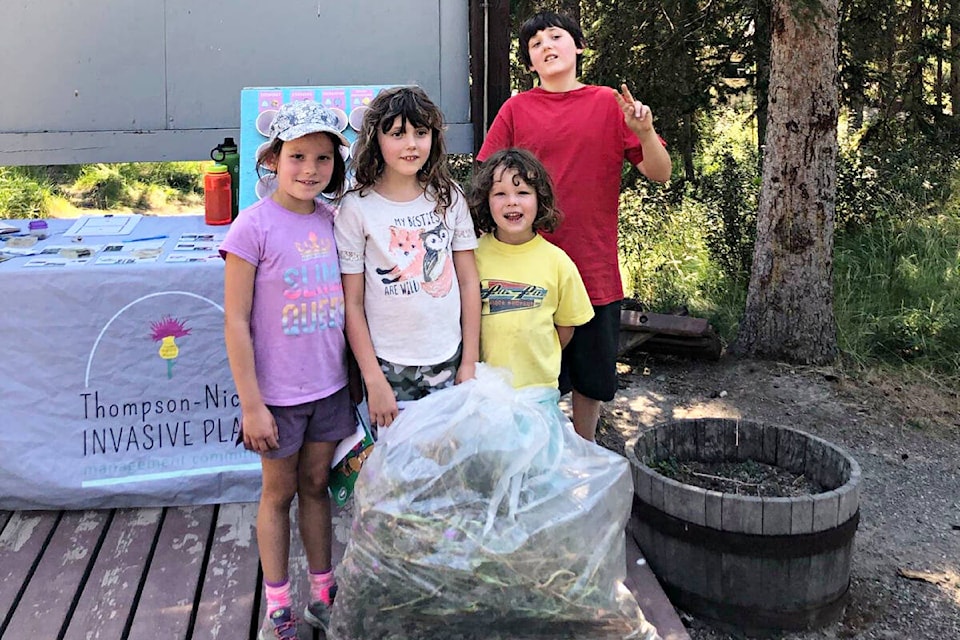By Dr. Catherine Tarasoff
It’s that time of year when most invasive plants are starting to flower, so now is the time to take another look for patches of invasive plants that you may have missed earlier in the season.
While you are busy manually removing invasive plants on your property, it’s important to think about how to dispose of these plants. Disposal can play a large role in whether or not you gain success with your invasive plant management efforts. While many homeowners have a composter or a burn pile for disposing of invasive plant species, these two methods may actually make your invasive plant situation worse!
If you choose to compost invasive plants, keep in mind that their plant parts and seeds can survive the composting process. If you spread compost containing invasive plants in your garden or flower boxes, you may be spreading invasive plant parts and seeds and providing them with extra nutrients, which is an excellent combination to encourage invasive plant establishment and spread.
If you decide to compost your invasive plants, consider composting them before they are in flower or have set seed. You should also consider drying the invasive plants prior to putting them in the compost; this will help prevent living plant parts (i.e. seeds and rhizomes) from re-establishing and taking root in your compost.
If you burn your invasive plants in an open burn pile, it’s important to keep in mind that many have seeds which benefit from fire. When you ignite the burn pile, you liberate invasive plant seeds from their “heavier” plant parts, and the ashes that remains may be full of undesirable viable seeds. These seeds have the potential to blow away in the wind, dispersing seeds over a large area.
A better alternative to an open burn pile is a closed burn pit. A pit at least 40 cm deep, with an earthen berm around the perimeter, will prevent invasive plant seeds from blowing away after the burn. Better yet, bury the ashes, post fire, with 2-4 cm of clean soil to further ensure that invasive seeds do not disperse. Again, when possible, burn your invasive plants before they flower or go to seed. Before installing and using a burn pit, ensure you review and comply with relevant regulations and requirements.
Finally, if you want to dispose of the removed invasive plants in a more conventional manner, Thompson-Nicola Regional District (TNRD) solid waste facilities will accept invasive plants free of charge. All plants must be securely contained within a clear industrial-strength plastic bag and disposed of in designated invasive plant bins, where present, or household garbage. Do not put invasive plants in compost or brush and branch piles.
Did you know that all TNRD electoral area residents, as well as residents of select municipalities (Clinton, Clearwater, Sun Peaks, Logan Lake, and Merritt) are eligible to participate in the TNRD Invasive Plant Program services? These include rebate programs for invasive plant management, free equipment loan-out, and free land consultations.
Knowledge is power. Learn about local invasive plants, and find out what resources are available, by reaching out to the Thompson-Nicola Invasive Plant Management Committee at www.tnipmc.com.
Dr. Catherine Tarasoff is the Education and Outreach Coordinator for the TNIPMC (on Facebook at Thompson-Nicola Invasive Plant Management Committee).
editorial@accjournal.ca
Like us on Facebook and follow us on Twitter
